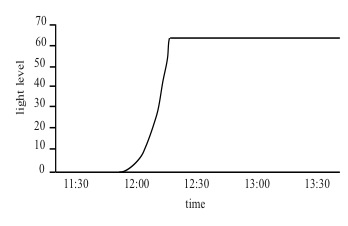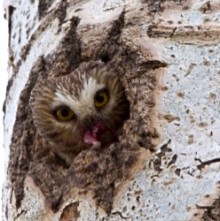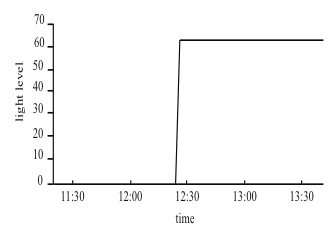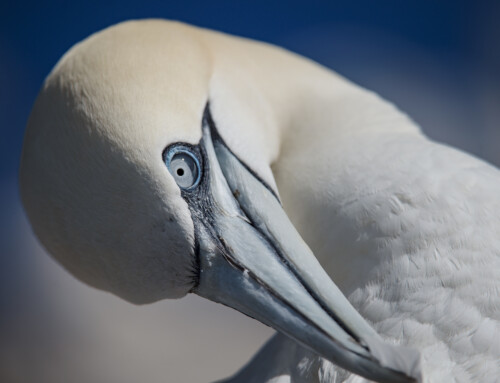Technology reveals the extent of cavity use by Norther Flicker
Linked paper
Cavity use throughout the annual cycle of a migratory woodpecker revealed by geolocators. Elizabeth A. Gow, Karen L. Wiebe & James W. Fox. 2014. IBIS. DOI: 10.1111/ibi.12206
Using geolocators, a technology that monitors light-levels and migration, we discovered that Northern Flickers use cavities throughout the year including during migration.
Numerous animal species use tree cavities for either nesting or roosting, including birds (e.g. woodpeckers, tree swallows, blue birds, some ducks and owls), mammals (e.g. bats and rodents), amphibians (e.g. frogs), and reptiles (e.g. snakes; McComb & Noble 1981). Cavities can be made by excavators, such as woodpeckers, or occur naturally due to tree decay. In human altered habitats, cavities for nesting are often limiting (Wiebe 2011), meaning there are not enough trees and primary excavators to create cavities to meet the demand of cavity nesters. Cavities are often preferred as nest sites as they provide protection from the elements (Vel’ký et al. 2010), and lower nest predation rates (Mainwaring 2011). Given the benefits of cavities for providing a more moderate climate, many animals also roost in cavities during the non-breeding period. Although it may be relatively easy to monitor resident cavity use during the winter, for migratory species estimating the frequency of cavity use presents a challenge.
Light-level geolocators are small 0.5-2 g data loggers used to monitor migration patterns of small birds (Stutchbury et al. 2009). Geolocators measure light intensity. Using software to determine sunrise and sunset times the day length is used to determine latitude and local noon or midnight determines longitude. There is only one place in the world that has a specific day length and sunrise and sunset time. Typically, light levels gradually increase at sunrise and decrease at sunset and light intensity increases the higher the sun is in the sky (Fig 1a); however, when birds enter or leave a cavity there are abrupt changes in light intensity (i.e., dark to full intensity), which can be seen clearly on geolocator data (Fig 1b).

Figure 1 (a)
A typical sunrise transition from geolocator data.
Figure 1 (b)
An abrubt ‘sunrise’ transition indicating a bird exiting a cavity
Our primary intention when we deployed geolocators on northern flickers (Fig 2), a cavity nesting migratory woodpecker, in 2010, from our study site in central British Columbia, was to monitor migratory patterns (see our future studies on flicker migration coming out soon). Sometimes one is met with pleasant unexpected surprises. However, to our amazement (and annoyance), it appeared that all of the light transitions were atypical, showing abrupt transitions between dark and light (Fig 1b). In science sometimes when things don’t work out the way you plan, there may be other interesting information you can gather. It was these abrupt transitions that indicated cavity use, which lead us to study cavity use throughout the year in northern flickers.
 Figure 2 A Northern Flicker fitted with a geolocator.
Figure 2 A Northern Flicker fitted with a geolocator.
There are six general time periods during the annual cycle for flickers: the breeding season that lasts ~ 3–4 months from late April to July– early August; the post-breeding/pre-migratory period when birds are moulting, caring for fledglings, and preparing for migration; the fall migration period, when birds are moving from the breeding ground to a non-breeding/wintering site; the non-breeding or wintering period, when birds are presumably occupying a home range at a southerly latitude; the spring migratory period when birds migration from the wintering grounds to the breeding site; and finally the pre-breeding period when birds have arrived on the breeding grounds but have not yet begun nesting. Because flickers seek out cavities each night, it is expected that during periods when birds are moving between habitats (i.e., during migration) that the ability of a bird to seek out a cavity might be reduced. During the wintering period when birds are presumably sedentary on a home range, they would be more likely to roost in a cavity. We thus examined if cavity use differed during each time period listed above.
Remarkably, flickers used cavities even during migration, emphasizing that cavities are important resources for flickers all year, and flickers may select migration sites based on the availability of a cavity. Cavities clearly have benefits beyond a nest site.
Typical forest management strategies focus on providing suitable habitat for breeding birds, but it is clear from our research that management strategies should also consider the benefits of maintaining sites for roosting birds in the winter. Several reports from citizen scientists, and birders, suggest that flickers roost solitarily in a cavity. Because, at least in flickers, migratory populations overlap with sedentary populations more cavities may be needed during the non-breeding periods than the breeding period to accommodate the increased flicker populations during the winter. This suggests a need for further study into cavity use during non-breeding periods to better develop effective forest management plans.
We encourage future researchers and those involved in management practices to think outside the box when it comes to management of cavity nesting communities. Suitable cavities for non-breeding roosting may be just as important as cavities for breeding for maintaining viable populations of cavity nesting birds
References
Mainwaring, M.C. 2011. The use of nestboxes by roosting birds during the non-breeding season: A review of the costs and benefits. Ardea 99: 167–176.
McComb, W.C. & Noble, R.E. 1981. Nest-box and natural-cavity use in three mid-south forest habitats. J. Wildl. Manage. 45: 93–101.
Stutchbury, B.J.M., Tarof, S.A., Done, T., Gow, E.A., Kramer, P.M., Tautin, J., Fox, J.W. & Afanasyev, V. 2009. Tracking long-distance songbird migration by using geolocators. Science 323: 896.
Vel’ký, M., Kaňuch, P. & Krištín, A. 2010. Selection of winter roosts in the great tit Parus major: influence of microclimate. J Ornithol 151: 147–153.
Wiebe, K.L. 2011. Nest sites as limiting resources for cavity-nesting birds in mature forest ecosystems: a review of the evidence. J. Field Ornithol. 82: 239–248.
All images © Elizabeth Gow
If you want to write about your research in #theBOUblog, then please see here.






